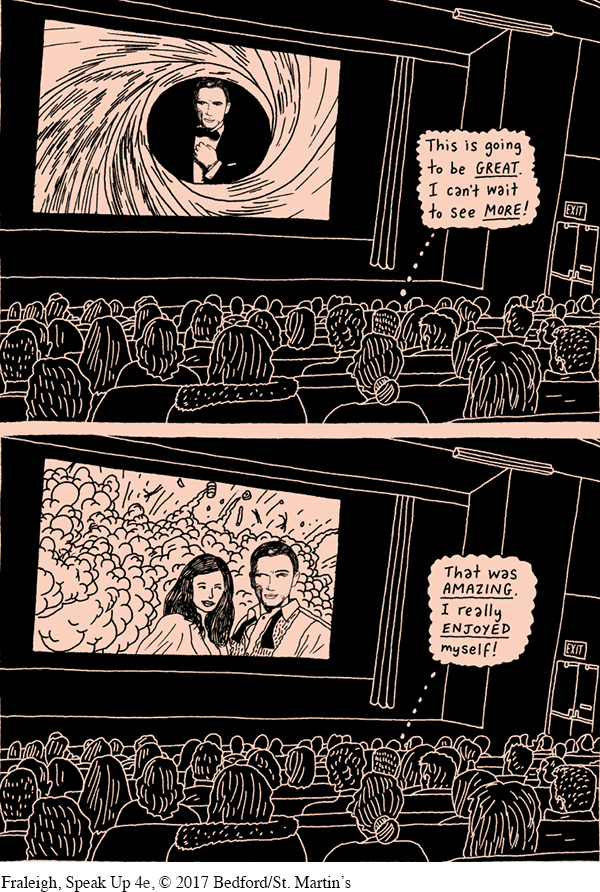Chapter 10 INTRODUCTIONS AND CONCLUSIONS

Page 279
Look for the  and
and  throughout the chapter for adaptive quizzing and online video activities.
throughout the chapter for adaptive quizzing and online video activities.
“Strong introductions create audience interest; strong conclusions create lasting impressions.”
You’ve finally had time to break away from your schoolwork and see the latest James Bond movie. You’re sitting in the theater, munching popcorn as the curtains open, the lights dim, and the film’s opening sequence starts to roll. Every element of that sequence—
For the next two hours, you’re transported into an exciting world. And at the end of the movie, you’re left with the lasting sense that you’ve had a great time. The final close-
Just as a movie’s opening and closing elements powerfully influence the quality of your theater experience, your speech’s introduction and conclusion play crucial roles in your audience’s reception of your message. An effective introduction builds audience interest, orients audience members to the speech, and establishes your credibility as a speaker, and a strong conclusion leaves audience members with an enduring impression of your speech.
Page 280
After planning the body of your speech, your next step is to prepare the introduction and conclusion. Although these elements are shorter than the body, they’re just as crucial. After all, you won’t get your message across unless your audience is eager to listen. You also want your audience to remember your presentation long after it ends—